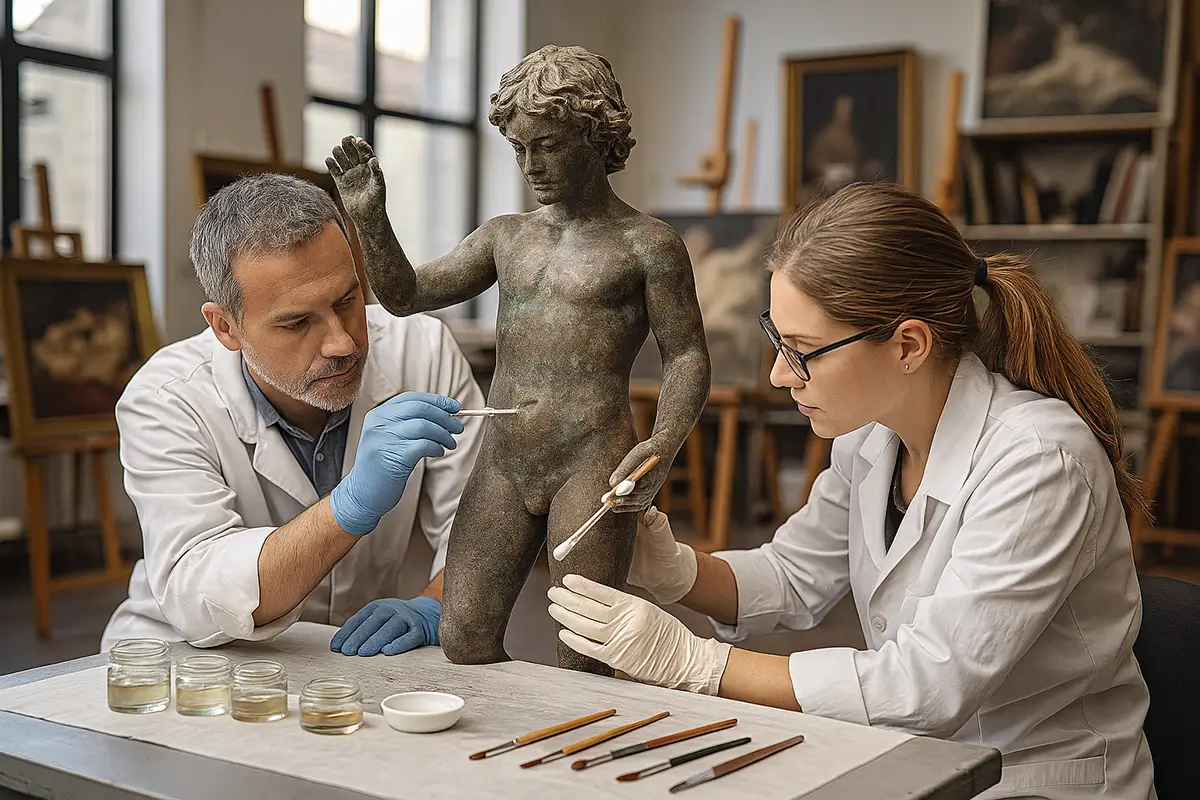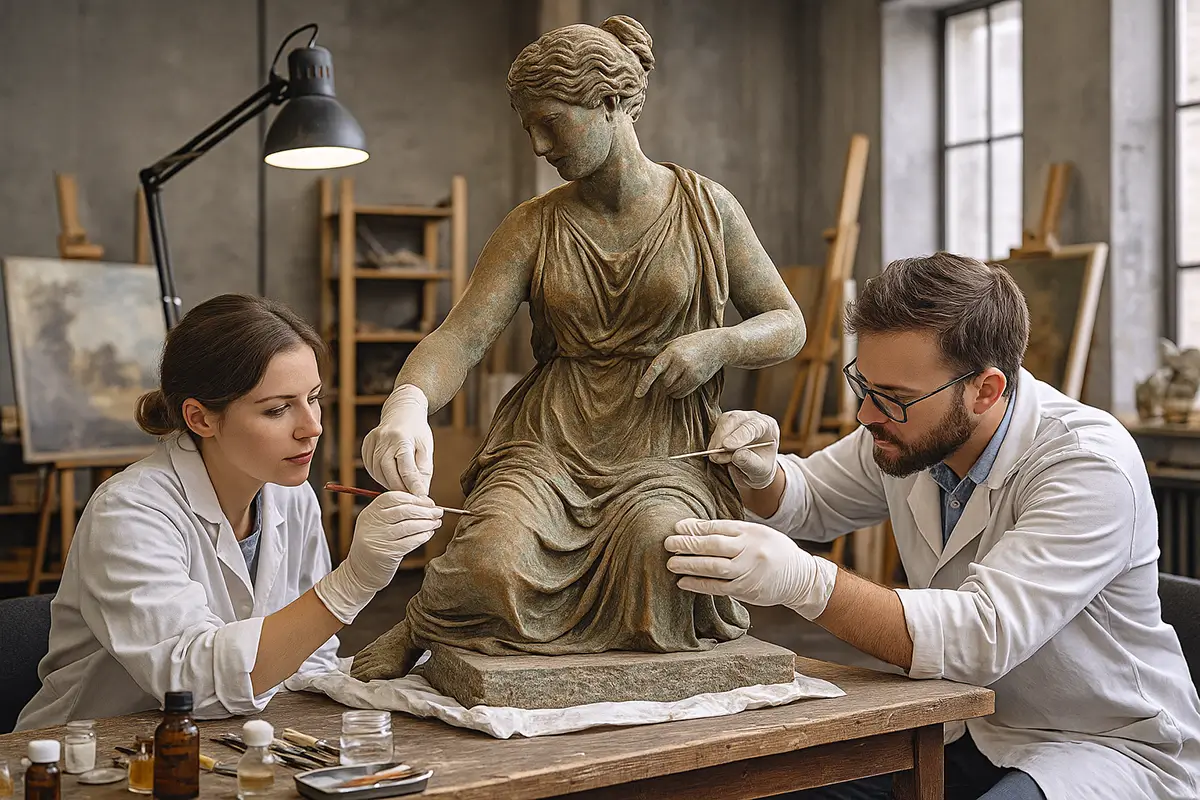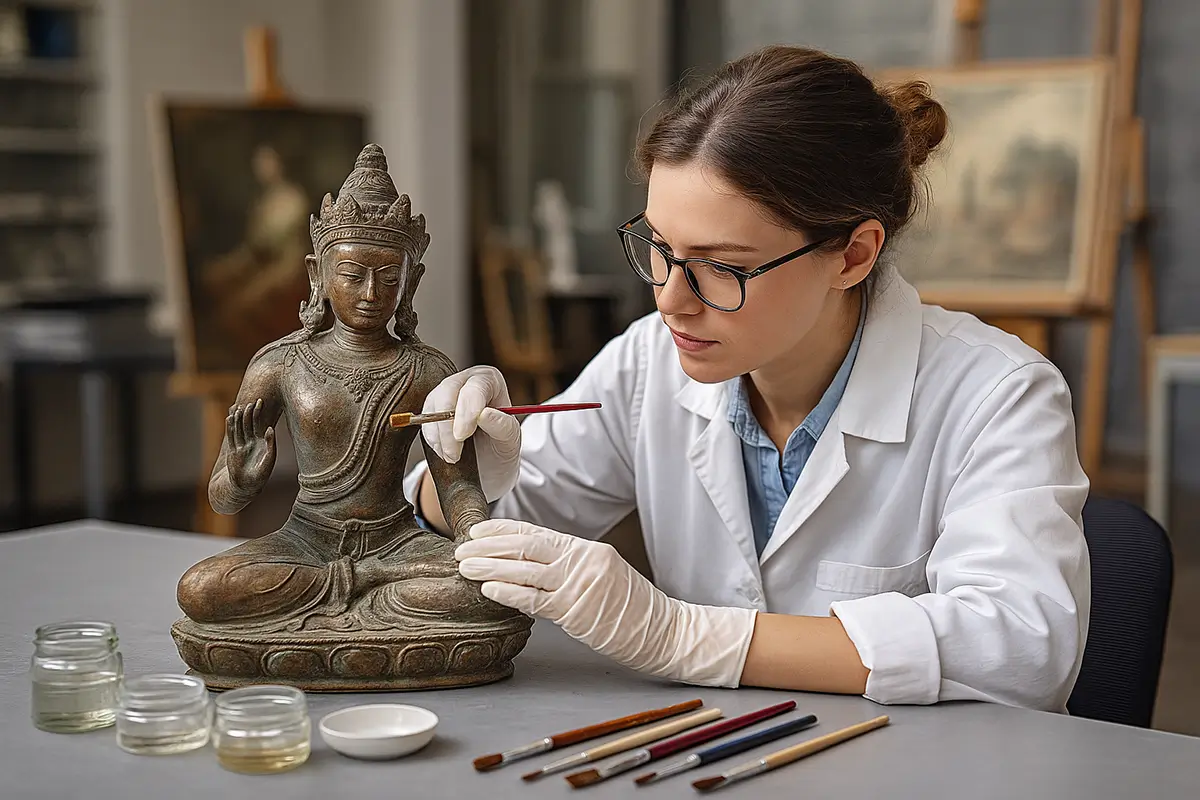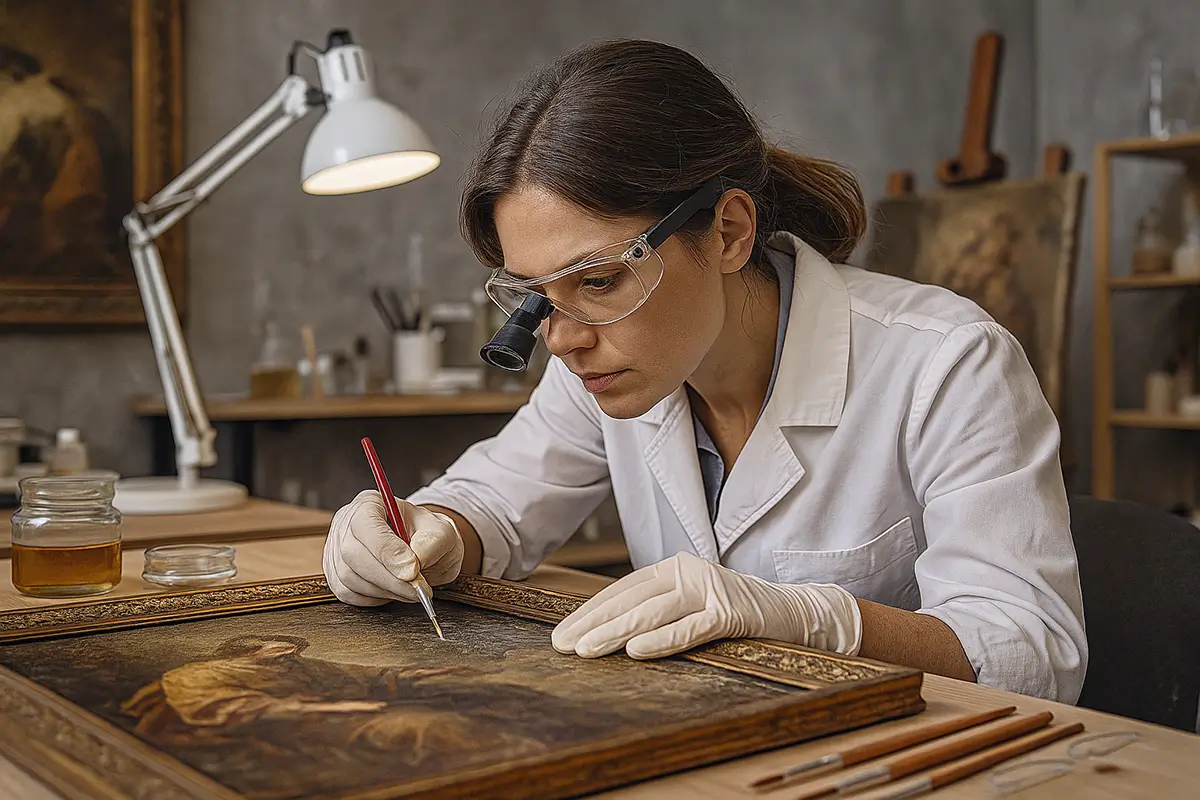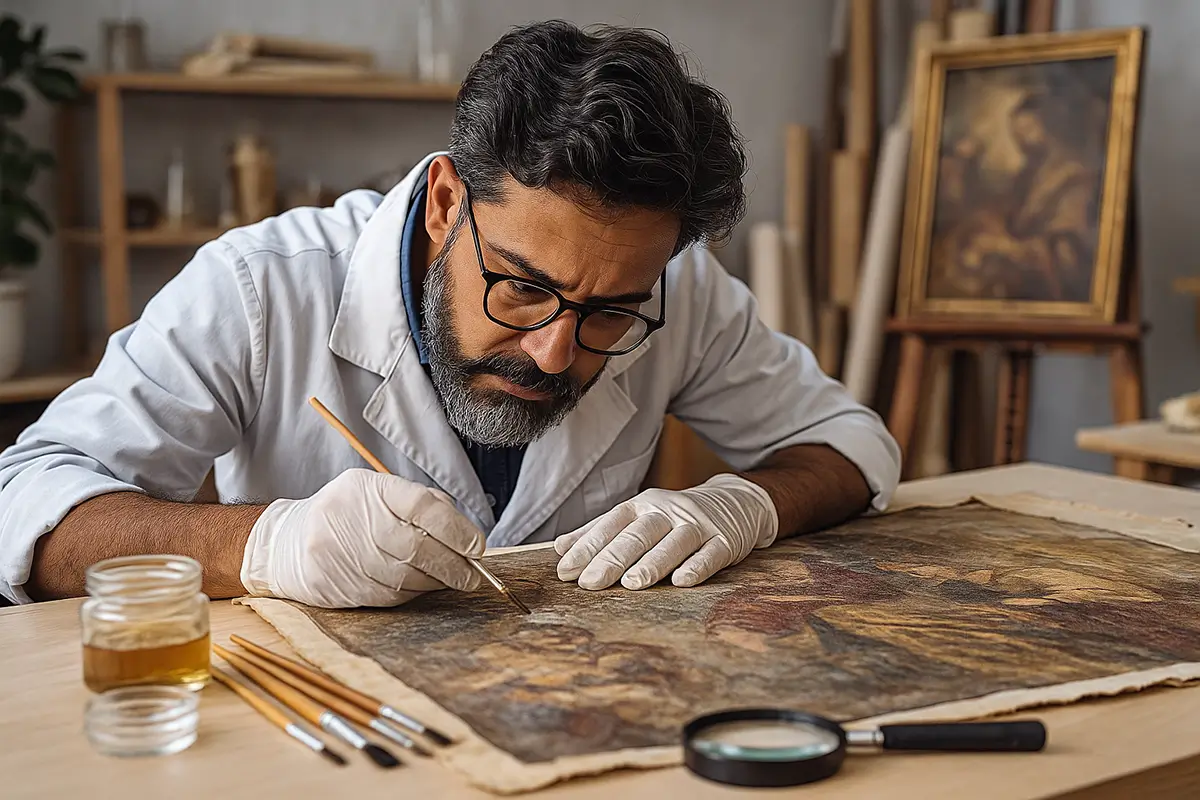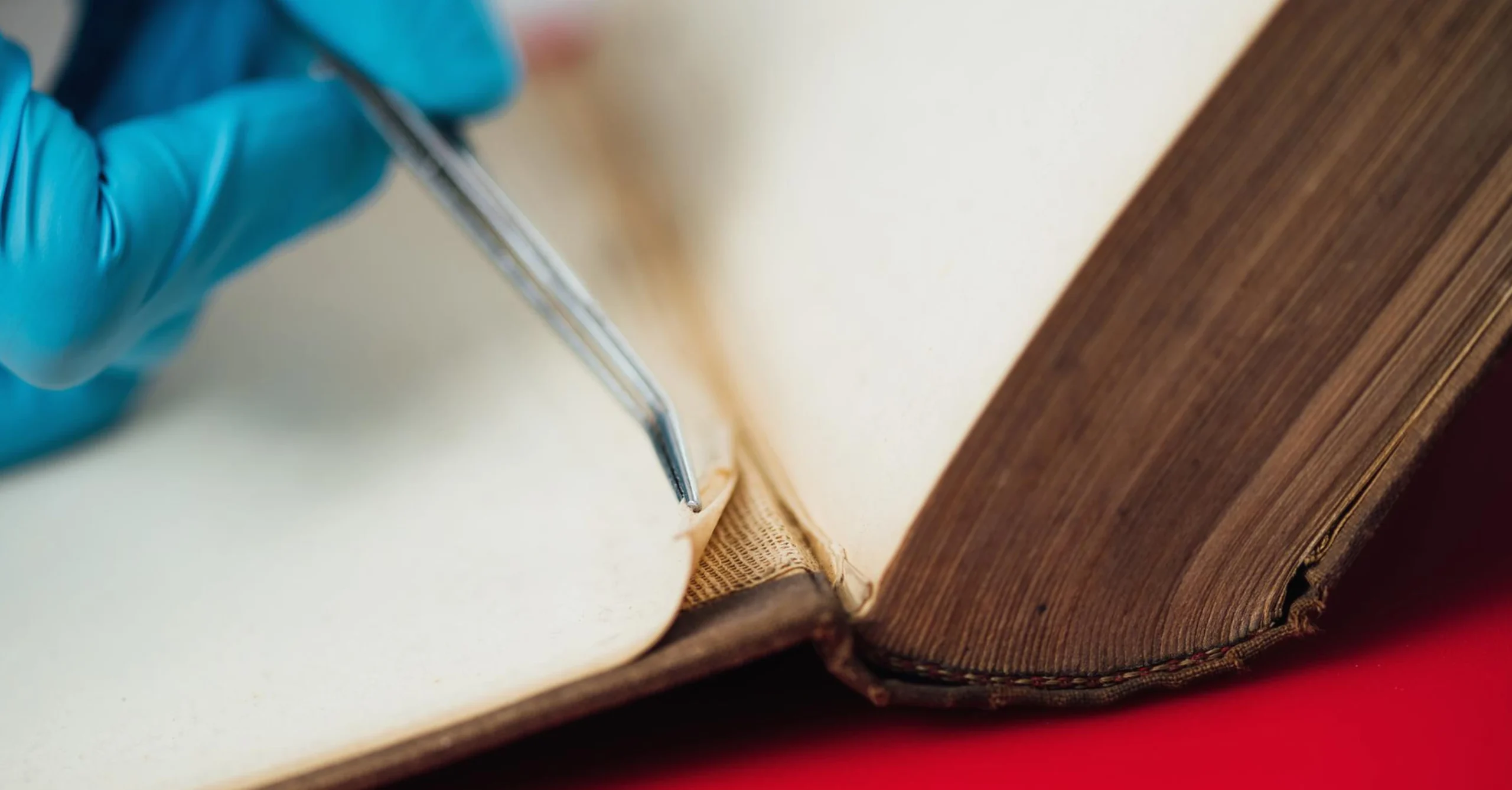Introduction: Prevention is better than cure
In medicine, prevention often costs less than treatment. The same holds true for art. Preventive conservation is the practice of protecting artworks from damage before it occurs. Instead of waiting until a painting cracks, a textile fades, or a sculpture corrodes, preventive conservation ensures that artworks remain stable and secure for decades.
For collectors, corporates, and museums in India, where heat, humidity, and pollution present unique risks, preventive conservation is not a luxury—it is essential. This article explores what preventive conservation is, why it matters, and the practical steps stakeholders can take to extend the life of their collections.
What is preventive conservation?
Preventive conservation involves managing the environment and conditions in which artworks are stored, displayed, and handled to slow or prevent deterioration. Unlike interventive conservation, which treats existing damage, preventive conservation is about risk reduction.
Core principles:
- Control of environmental conditions (temperature, humidity, light).
- Use of archival-quality materials for storage and display.
- Regular monitoring and inspections.
- Education and training for handlers and custodians.
In short, it is about building protective barriers between artworks and potential hazards.
Why preventive conservation matters in India
India presents conservation challenges that are both environmental and structural:
1. Climate extremes
- Summers in North India can exceed 45°C.
- Coastal humidity in cities like Chennai and Kochi accelerates mould growth.
- Monsoon leaks damage countless artworks every year.
2. Pollution and dust
- Delhi and Mumbai rank among the world’s most polluted cities. Dust and chemical pollutants settle on surfaces, degrading pigments and paper.
3. Infrastructure gaps
- Many galleries, offices, and homes lack climate-controlled storage or display systems.
4. Cultural responsibility
- India’s rich heritage—from miniatures and sculptures to modern masters—demands proactive care. Neglect risks irreversible cultural and financial loss.
Preventive conservation vs restoration
- Restoration = fixing visible damage.
- Conservation = preventing future damage.
Example:
- Restoration = retouching flaked paint on a Husain canvas.
- Preventive conservation = controlling humidity so the paint doesn’t flake in the first place.
Preventive care reduces the frequency and cost of restoration, and it better preserves the artist’s original intent.
Key elements of preventive conservation
1. Environmental control
- Temperature: Ideal range = 18–24°C.
- Humidity: Stable at 45–55%. Fluctuations are more damaging than extremes.
- Light: Limit UV exposure; use LED lighting for displays.
- Pollution: Use air purifiers to reduce dust and chemical pollutants.
2. Storage solutions
- Use acid-free archival materials for mounts, folders, and boxes.
- Avoid wooden storage without sealing, as it may emit harmful vapours.
- Store works vertically with adequate separation to prevent warping.
3. Handling protocols
- Always use gloves for paper and textiles.
- Train staff in proper lifting and carrying.
- Never stack artworks directly on top of each other.
4. Pest management
- Monitor for insects, especially silverfish and moths.
- Avoid chemical sprays near artworks.
- Use controlled, non-invasive pest deterrents.
5. Emergency planning
- Prepare protocols for fire, flood, or leaks.
- Store artworks above ground level in flood-prone areas.
- Keep digital records of provenance and condition for insurance.
Case examples: Preventive conservation in practice
Case 1: Corporate collection in Mumbai
During the monsoon, a corporate discovered damp patches in its office walls. Preventive conservation consultants installed dehumidifiers and shifted artworks away from vulnerable areas. As a result, a potential fungal outbreak was avoided.
Case 2: Museum textiles in Jaipur
Historic textiles were fading under direct lighting. By switching to UV-filtered LEDs and lowering light exposure hours, fading slowed significantly, extending the textiles’ life.
Case 3: Private collector in Hyderabad
A collector stored miniature paintings in wooden frames with acidic mounts. Preventive conservation replaced them with acid-free archival mounts, halting deterioration and protecting future market value.
The role of valuation and insurance in preventive conservation
- Valuation reports often highlight conservation risks.
- Insurers may require preventive measures before approving coverage.
- Collections with documented preventive conservation practices receive higher credibility in markets and auctions.
Thus, preventive conservation is both a cultural and financial safeguard.
Technology and preventive conservation
Digital tools are making prevention more effective:
- IoT climate sensors monitor humidity and temperature in real time.
- Data loggers track conditions during transport and storage.
- AI analytics predict risks based on environmental patterns.
- 3D scanning creates digital backups for documentation.
For Indian collectors, where environments can change dramatically between seasons, technology provides continuous vigilance.
Best practices for collectors and institutions
- Monitor environment: Use sensors to track climate conditions.
- Regular inspections: Check for early signs of deterioration.
- Rotate displays: Avoid exposing works to light for prolonged periods.
- Invest in archival materials: Acid-free, pH-neutral mounts and storage.
- Educate staff: Training is as important as infrastructure.
- Partner with professionals: Conservation experts provide both assessment and preventive strategies.
Ethical considerations
Preventive conservation also carries ethical responsibilities:
- Respect the integrity of artworks—avoid unnecessary interventions.
- Use reversible protective methods.
- Maintain transparent documentation of all preventive measures.
For institutions, ethical conservation builds credibility with lenders, donors, and the public.
Future of preventive conservation in India
As awareness grows, preventive conservation is moving from niche to mainstream. Future directions include:
- Corporate integration: Companies with large collections will formalise preventive conservation as part of asset management.
- Museum standards: Indian museums are increasingly aligning with international preventive conservation guidelines.
- Public-private partnerships: Large-scale heritage conservation projects will rely on preventive strategies.
- Technological adoption: IoT and AI will become standard in high-value storage and exhibitions.
Conclusion: Protect today, preserve tomorrow
Preventive conservation is the quiet, behind-the-scenes practice that ensures art survives not just for years, but for centuries. For Indian collectors, corporates, and institutions, it offers both peace of mind and preservation of value.
By controlling environment, improving storage, training staff, and planning for emergencies, preventive conservation reduces risks and lowers long-term costs. More importantly, it protects art as a cultural legacy for future generations.
Explore our Art Conservation Services. At TurmericEarth, we specialise in preventive conservation strategies tailored to India’s unique climate and infrastructure, ensuring your artworks are protected today—and preserved for tomorrow.



